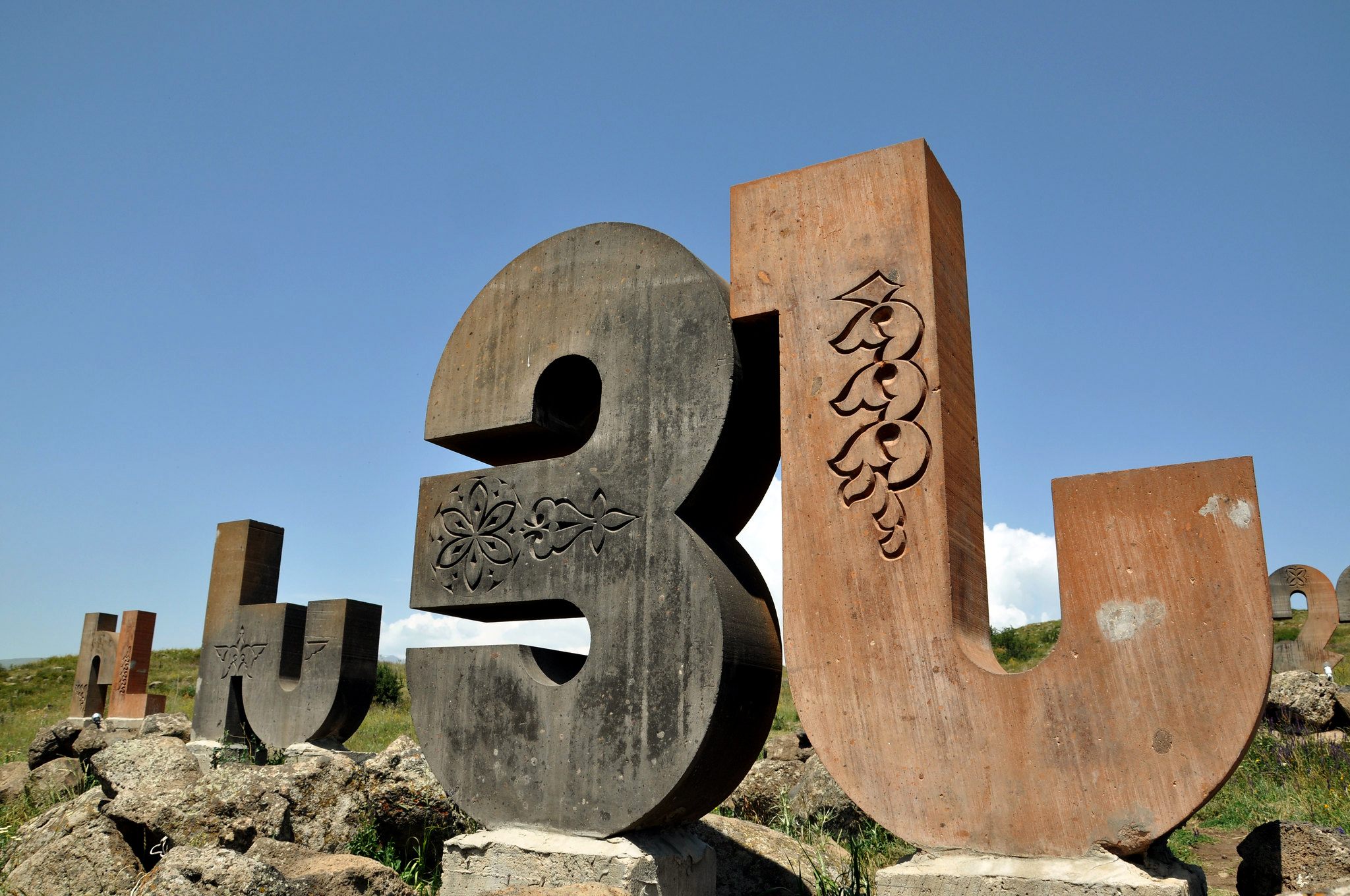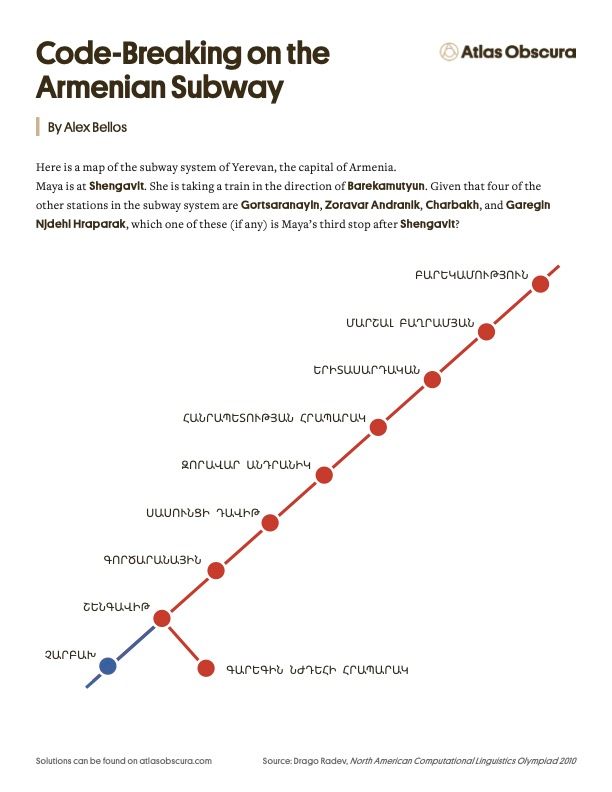
Puzzle Monday: Code-Breaking on the Armenian Subway
Among our crosswords and other puzzles, we’ll be featuring linguistic challenges from around the world from puzzle aficionado and writer Alex Bellos. A PDF of the puzzle, as well as the solution, can be downloaded below.
A short drive from Yerevan, the capital of Armenia, is a monument on the side of a mountain that consists of giant stone versions of the 39 letters of the Armenian alphabet. No other country has honored its alphabet with such grandeur. But few countries are as indebted to their alphabets as Armenia is.
The Armenian language is spoken by about six million people, half of whom live in the landlocked republic in the Caucasus region. It has had its own alphabet since the year 405, when the monk Mesrop Mashtots designed the letters in order to translate the Bible into Armenian, then only a spoken language. Mashtots’s invention was arguably the most important single event in the history of the country.
“Many languages of the empire of Alexander the Great have not survived,” says Igor Dorfmann-Lazarev of Hamburg University’s Center for the Study of Manuscript Cultures, referring to the vast area that stretches from Greece to Pakistan. “Armenian is one of the few languages that did survive, and this was primarily because of its alphabet.

“The alphabet changed the outlook of the people. By adopting writing that was distinct, the Armenians protected their autonomy. The alphabet influenced the entire culture.”
Early in the fourth century, Armenia became the first state in the world to declare Christianity its official religion. Later that century, Mashtots was working as a translator and interpreter for the Armenian royal chancellery. He traveled widely within the mountainous country and saw the brutal methods often used to coerce locals to abandon their pagan faiths for the Church. The shock of witnessing such violence led him to life as a monk.
Mashtots realized that one reason that locals resisted Christianity was the Bible itself—it was only written in Greek or Syriac, two languages very different from Armenian. How could they trust the word of God if He wrote only in the languages of foreigners?

Mashtots understood that Christianity would never become embedded in Armenian culture if the Bible and other works of ecclesiastical literature were not written in its language. He designed the alphabet for this express purpose, with 36 letters. (Three more were added later.) His alphabet was purely phonetic, meaning that every symbol had a unique sound, and vice versa. Most of Mashtots’s letters did not look like the letters of other languages, and as a result Armenians came to see them as core to their cultural identity.
The alphabet was revolutionary. Having its own writing system helped consolidate the Armenian nation, which at that time was in danger of being absorbed by the Byzantine Empire in the west and the Persian Empire in the east.
More importantly, adds Dorfmann-Lazarev, the fact that the alphabet was purely phonetic meant that it was much easier for Armenian speakers to become literate than it was for the speakers of other languages, whose writing systems that had developed over millennia and were much more complicated. “Usually instruction in a language would take years and years of familiarization, especially in Persia. But when the alphabet is phonetic, you can learn how to read and write almost straight away, in a few months.”
With an easier alphabet to learn, literacy spread more widely in Armenia than in its neighbors. Within decades, it had stimulated a flourishing of intellectual activity. Over the following centuries, Armenian intellectual culture advanced more quickly than in surrounding areas. Its scholars wrote treatises on science, ethics, history, and philosophy.

Ancient Armenian manuscripts are also notable because they are highly decorated, full of miniatures and elaborately drawn letters. Armenian religious art is mainly symbolic, with the letters of the alphabet taking a prominent role.
For example, it is common for the first letter in a paragraph to be drawn in the shape of a flower, or a bird or other animal. In fact, the letters of the Armenian alphabet drawn as birds are a distinct art form called terchnagir, meaning “bird letters,” and remains popular today both in Armenia and among the Armenian diaspora, half a million of whom live in the United States and Canada.
Many Armenians have terchnagir in their homes, including Dorfmann-Lazarev. “Twenty years ago I received a precious gift from my teacher’s widow in Yerevan: an alphabet embroidered with silk threads on a cloth. Later I framed it and it has always hung in the room of my children.
“The alphabet is a link to Armenia’s historical meaning. It is what makes Armenia different.”

Stumped? Download the solution!













Follow us on Twitter to get the latest on the world's hidden wonders.
Like us on Facebook to get the latest on the world's hidden wonders.
Follow us on Twitter Like us on Facebook